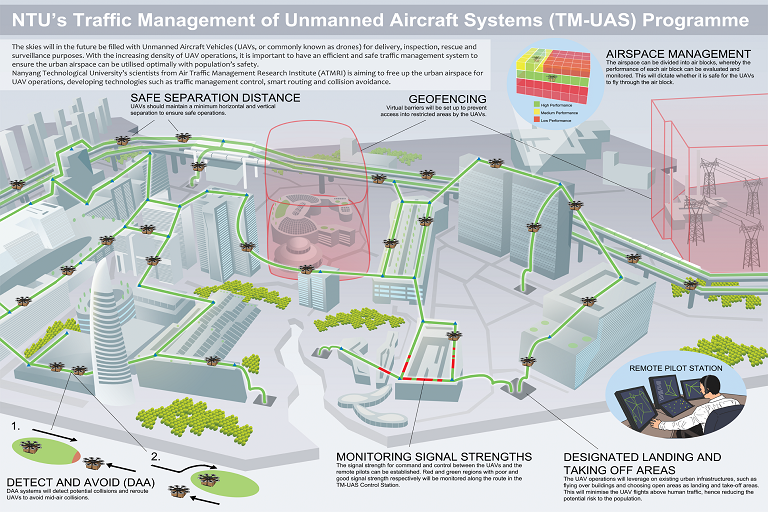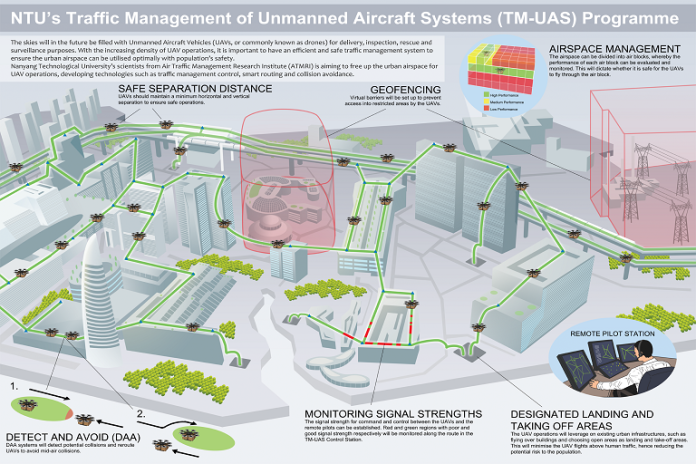SINGAPORE: Researchers at Nanyang Technological University (NTU) announced on Wednesday (Dec 28) they are studying ways to allow hundreds of Unmanned Aerial Vehicles (UAV) to fly efficiently and safely in Singapore’s airspace at any one time.
Their aim is to develop a traffic management system for drones consisting of designated air-lanes and blocks, similar to how cars on the roads have traffic lights and lanes.
Spearheaded by the university’s Air Traffic Management Research Institute (ATMRI) – a joint research centre between NTU and the Civil Aviation Authority of Singapore – the four-year Traffic Management of Unmanned Aircraft Systems programme will focus on airspace management solutions, collision avoidance technologies and virtual geofencing that prevents flying into restricted areas.
Tailored to urban environments like Singapore, the research includes a management system that divides airspace into blocks – like lanes on an expressway.

“Just like on the roads where you have multiple road users and for instance if we take the example of the bicycle track where we have e-scooters, you have cyclists and pedestrians,” said ATMRI Senior Research Fellow Faisal Mohamed Salleh.
However unlike expressways, the system would be able to dynamically designate the kind of traffic flying through each block and dictate whether it is safe for a drone to fly through each one.
To regulate such traffic on a nationwide scale, the programme plans to establish coordinating stations capable of optimising traffic routes to minimise congestion in real time.
Also being studied is the use of current infrastructure such as open fields for take-off and landing, and having drones fly above buildings – which can act as emergency landing sites to minimise risk to the public.
The project is primarily aimed at commercial, government and industrial use of drones. But researchers say development and implementation of any system will require the factoring-in of recreational drones as well as the possible intrusion of such devices into the system’s managed airspace.
The programme is currently in the initial phase of conceptual design and software simulation, which researchers aim to complete by end 2017. This will be followed by test-bedding solutions in real-world locations like Tuas.





